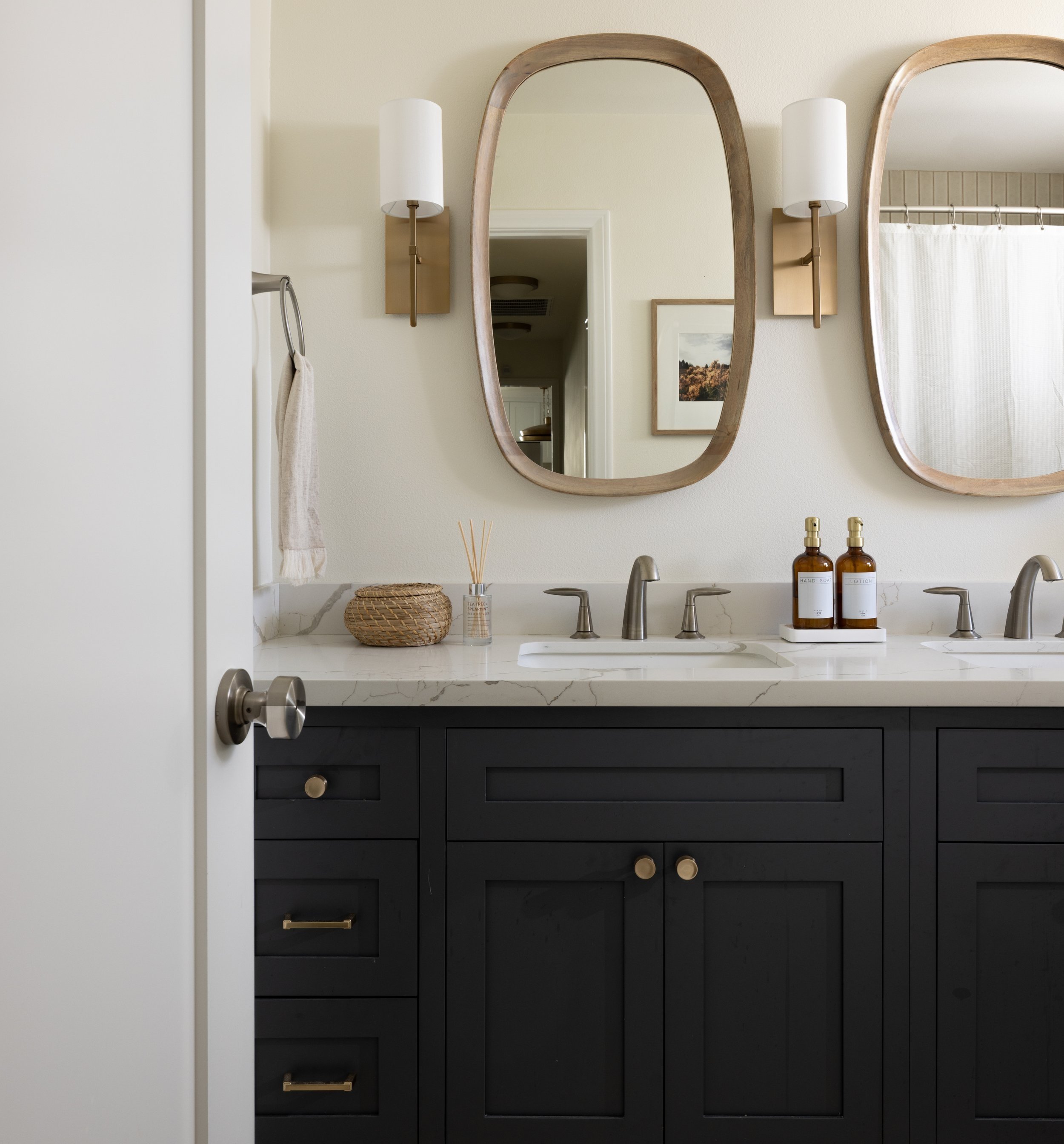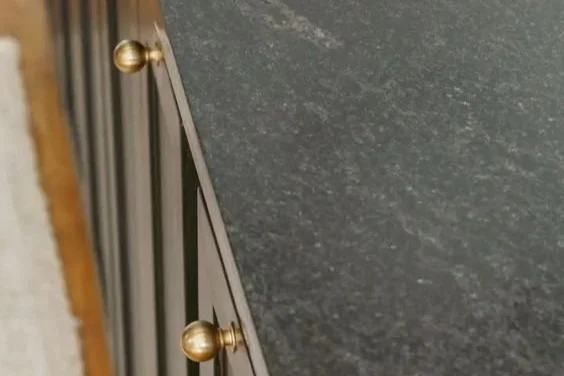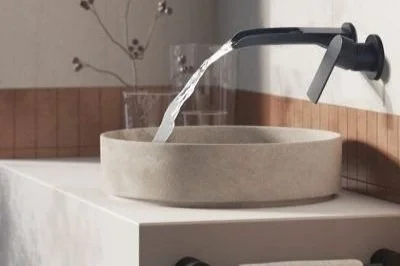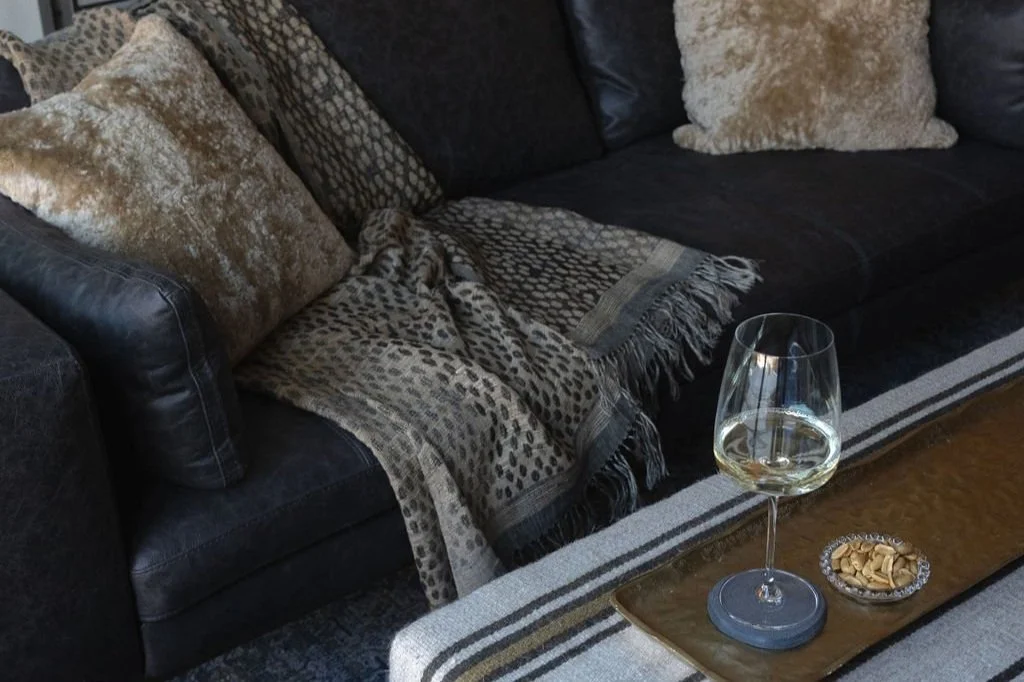Designing with Organic Materials: 6 Ways to Bring the Outdoors Inside
Incorporating natural materials into your home can create a calming, timeless atmosphere that will outlast trends. Natural materials don’t just look beautiful—they wear gracefully over time, age with character, and offer a tactile experience unmatched by synthetic alternatives. With a growing focus on wellness and sustainability, these choices bring beauty, longevity, and a deeper connection to nature into your design. Here’s how to achieve an organic look without sacrificing style or comfort:
1. Opt for Natural Stone Countertops
When it comes to countertops, everyone knows about marble and quartzite for their timeless beauty and durability. But did you know that granite can also be a stunning option? There are beautiful slabs of granite with striking movement that go beyond the "builder-grade" look many people associate with it. Travertine and soapstone are other excellent choices, often more affordable than you might expect. Natural stones wear beautifully over time, developing a patina that adds character to your home, making them a better long-term investment. While engineered quartz may seem appealing in the showroom, its longevity is untested, and its overly uniform patterns often feel artificial, lacking the tactile depth of real stone. If you’re really pressed on your budget, go with wood or butcher block counters! They patina beautifully over time and feel so much richer than the engineered options.
2. Invest in Real Wood for a Warm, Authentic Feel
Choosing real wood over veneers or laminate isn’t just about aesthetics—it’s about longevity and sustainability. Real wood floors, cabinetry, and furniture age gracefully, developing a patina that tells the story of your home over time. The warmth and tactile quality of natural wood bring a grounding, sensory experience into a room. Whether you choose white oak, walnut, or reclaimed wood, these materials not only feel inviting underfoot and to the touch but also outlast trends. Meanwhile, laminate floors, though initially cost-effective, often emit micro-plastics that contribute to environmental concerns and can feel artificial compared to the rich texture of natural wood.
3. Choose Fixtures that Mimic Nature
Incorporating natural elements into your home isn’t just about the look—it’s about the experience. When selecting plumbing fixtures, think about how water flows. A gentle, rain-like stream can transform a kitchen or bathroom into a relaxing retreat, mimicking natural bodies of water. Avoid harsh, high-pressure sprays that disrupt this experience, opting instead for designs that soothe. These subtle, tactile interactions with nature-inspired fixtures make your daily routines feel more connected and peaceful.
4. Soften Bathrooms with Organic Textures
Bathrooms, often dominated by hard surfaces like tile, glass, and stone, can feel cold or clinical without balance. Natural textures are the key to softening these spaces. A wood-framed mirror or a rattan-wrapped sconce introduces warmth and depth, creating a tactile contrast with the harder elements. Adding plants not only brings life into the space but also connects you to nature in a subtle, calming way. Organic elements like these wear beautifully over time, becoming timeless features in an otherwise rigid room.
5. Focus on Textiles to Add Layers and Comfort
Textiles are one of the easiest and most impactful ways to bring organic elements into your home. Natural fabrics like linen, wool, cotton, and jute feel incredible to the touch and add layers of texture that synthetics can’t replicate. Wool rugs, for example, wear well over time, softening with age while maintaining their strength. These fabrics not only bring tactile comfort but also contribute to the natural beauty and longevity of your design. When you interact with these materials, there’s an immediate sense of connection to nature that makes your home feel more inviting and authentic.
6. Small Natural Touches, Big Impact
If you can’t afford to invest in large natural elements like wood floors or stone countertops, you can still incorporate nature in smaller but highly impactful ways. Bamboo accent or dining chairs add warmth and texture without breaking the budget, and wool rugs can soften a room with comfort and natural beauty. Marble coffee tables provide a luxurious touch, bringing the tactile and visual appeal of stone into your living spaces. Even though these are smaller details, they have the power to transform your home’s ambiance, offering the same sensory richness and timeless style as larger, more expensive materials. Additionally, by avoiding faux materials, you reduce your exposure to micro-plastics and create a healthier, more sustainable environment for your family.
By thoughtfully incorporating natural stone, wood, and other organic elements, you create a home that feels authentic, grounded, and timeless. These materials not only age gracefully and outlast fleeting trends, but they also offer a tactile experience that enhances your connection to the space. Choose real, natural materials for a home that nurtures both your well-being and the planet.
Photo Credit:
Granite that looks like soapstone: designingvibes.com
Natural wood Cabinets: lightanddwell.com







